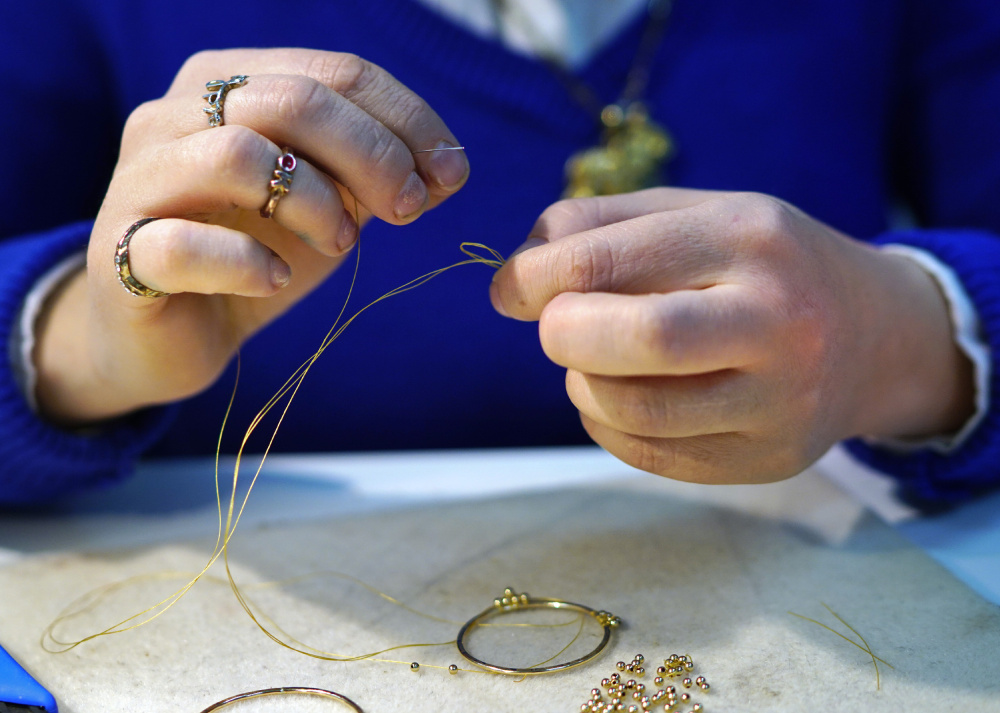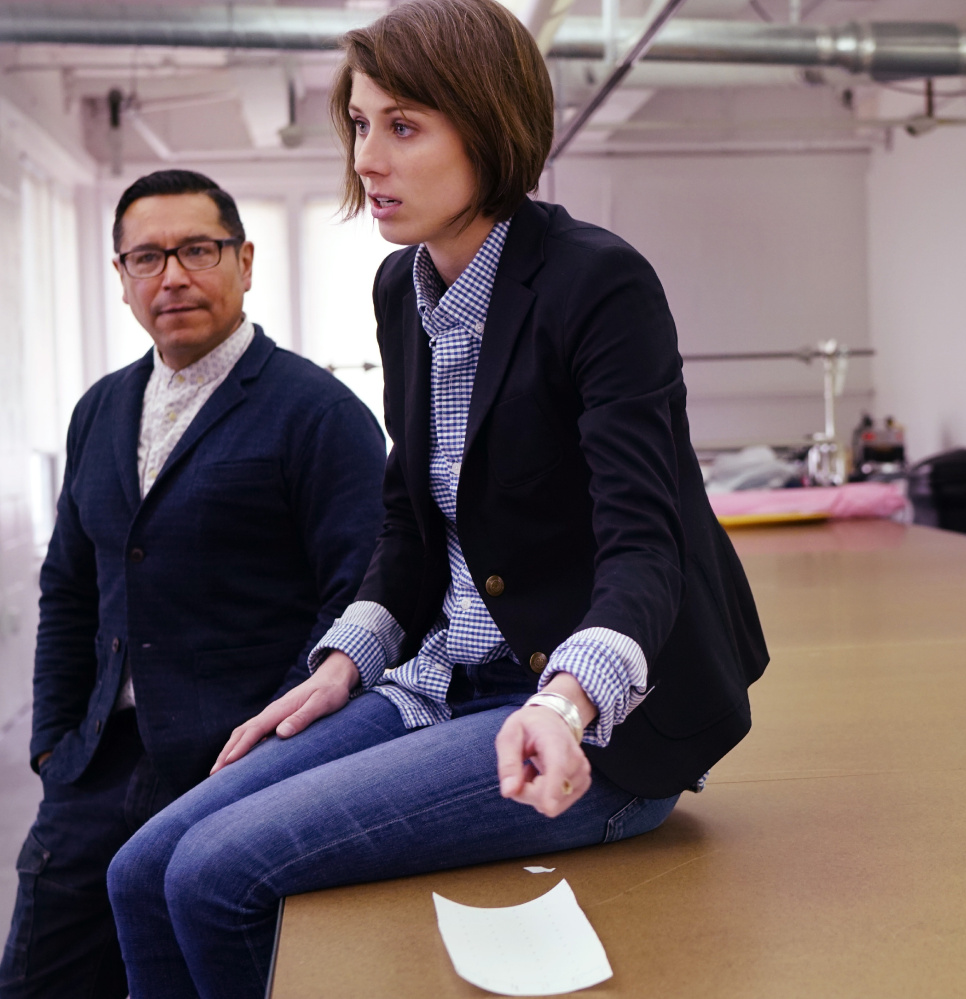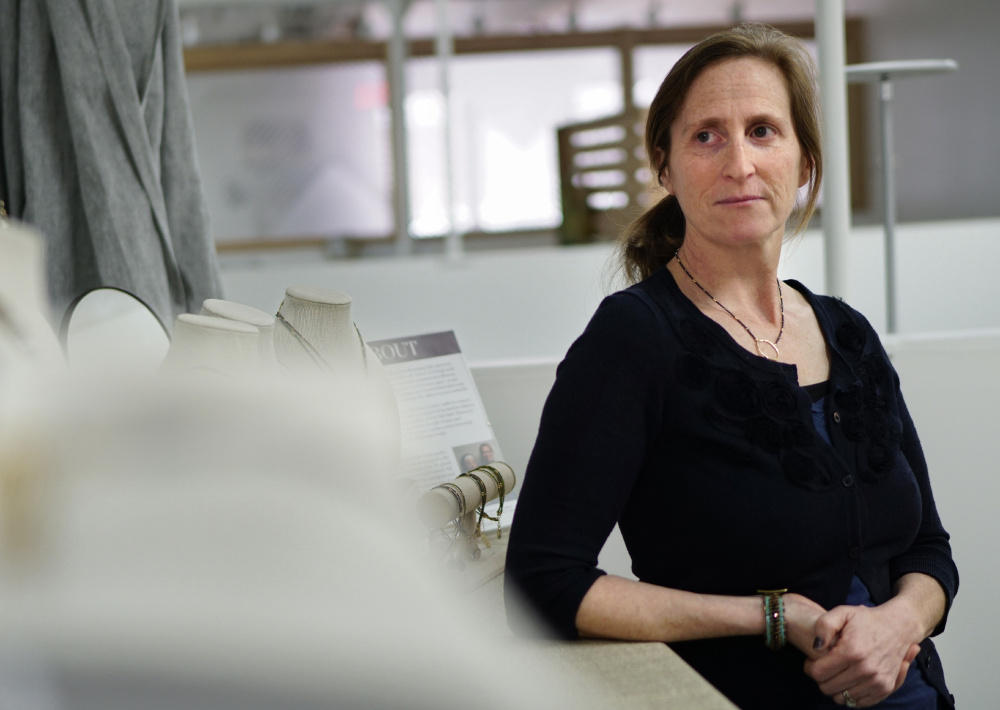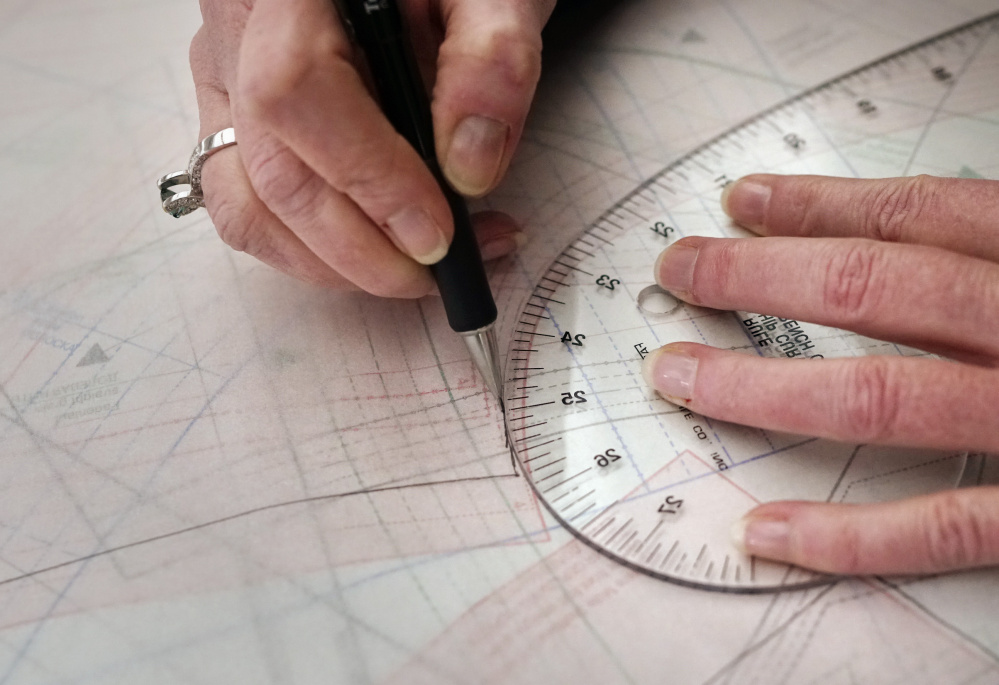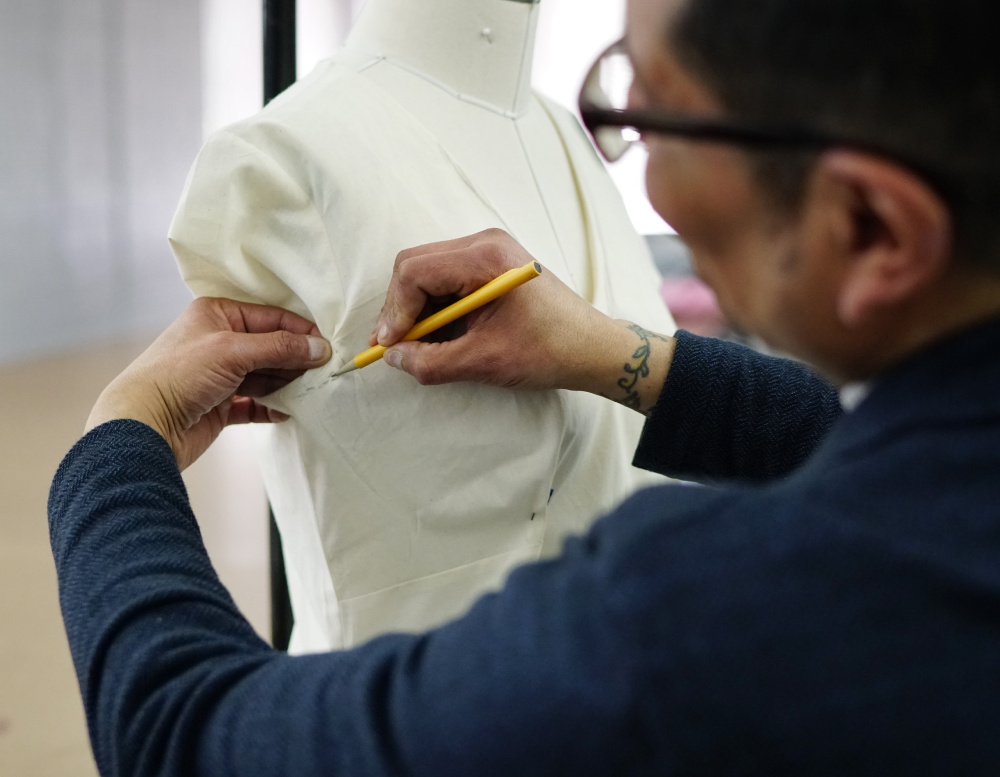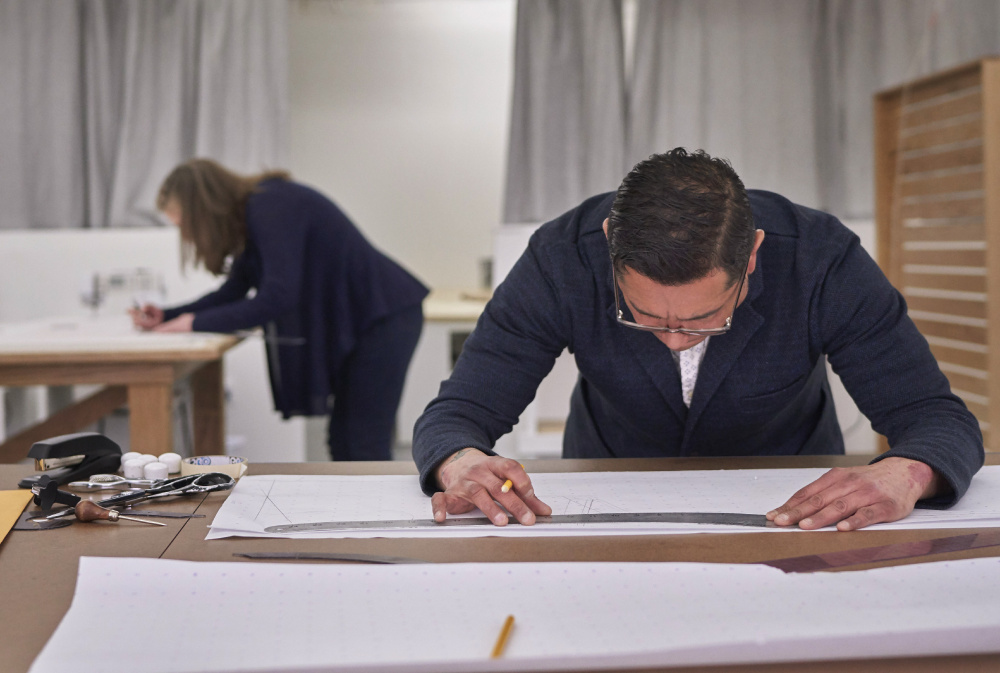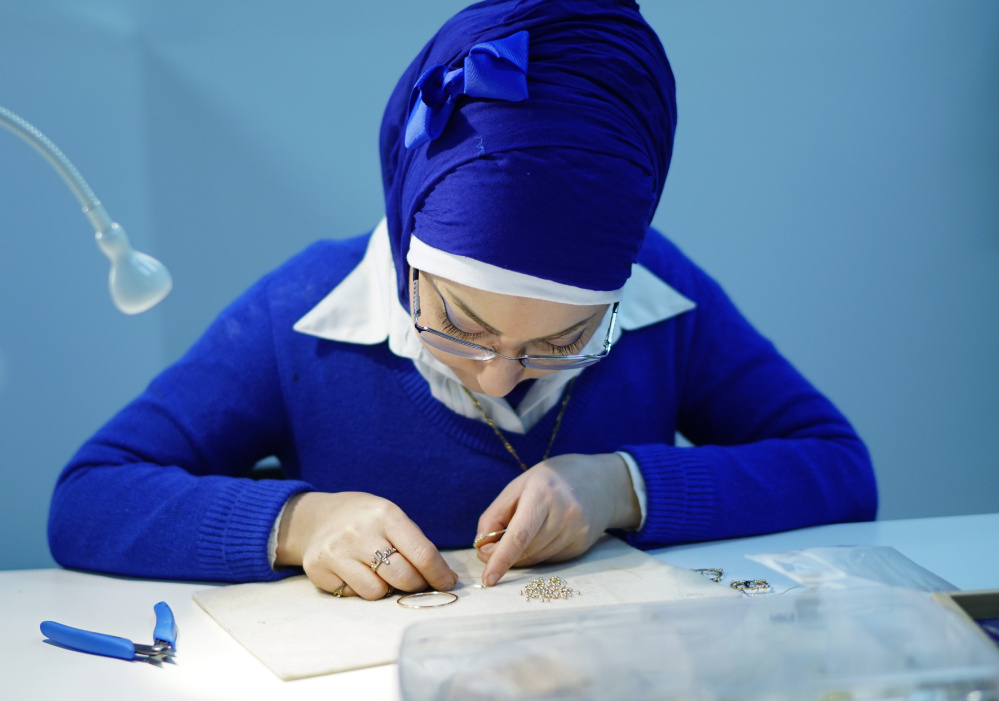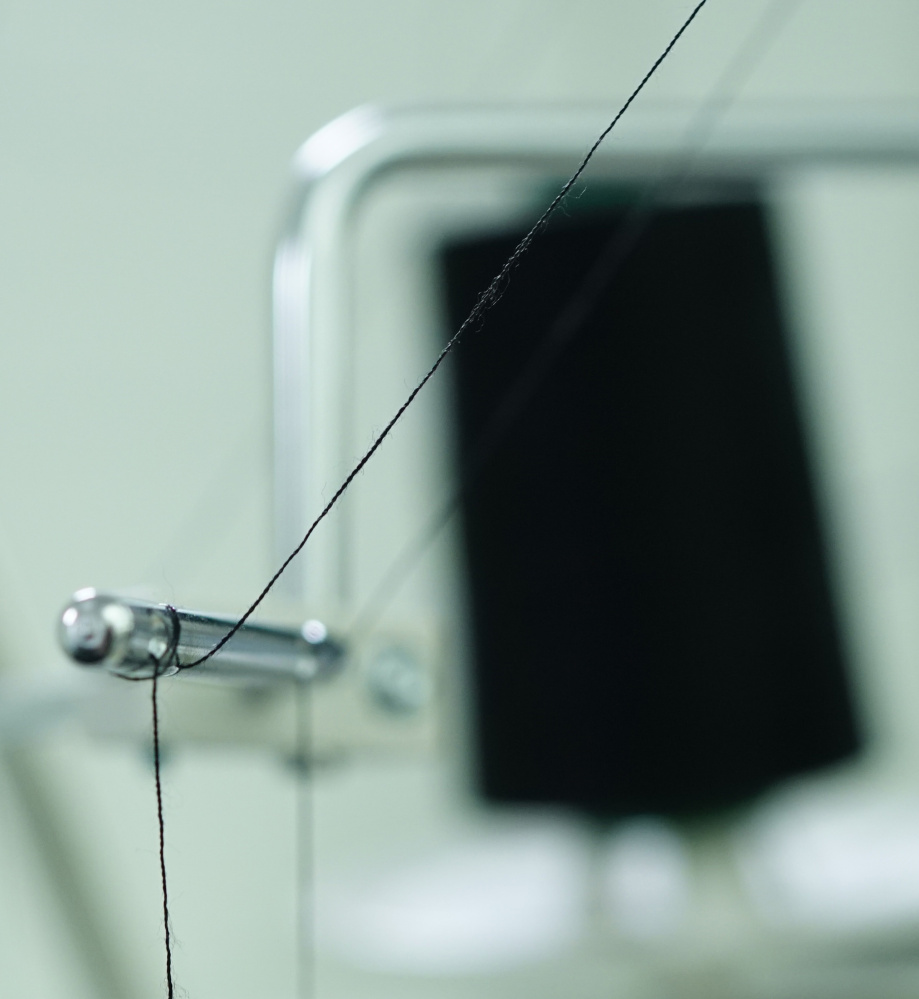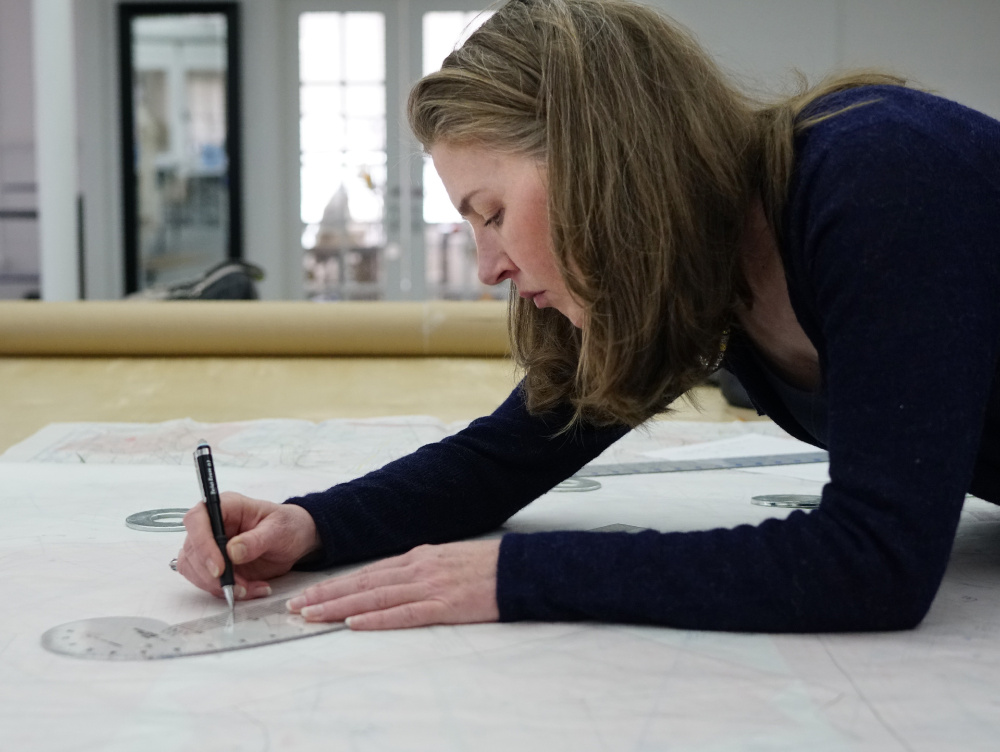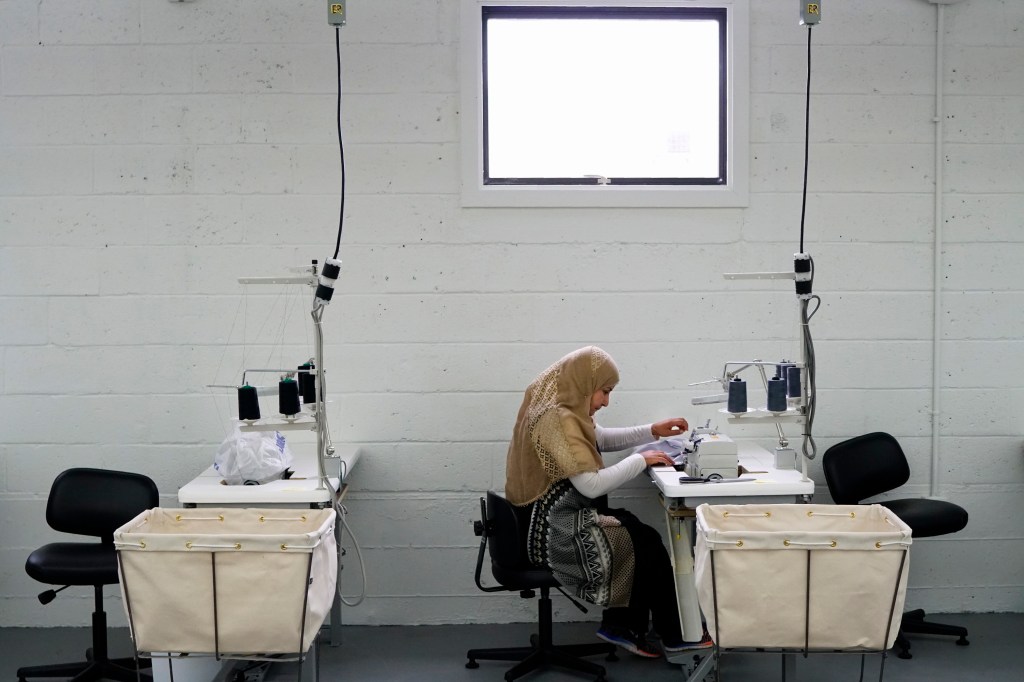In the early years of her career in clothing production and design, Kim Ortengren traveled a lot. She visited international factories in China, Taiwan and Peru, where fabric and apparel gets made, and much of what she saw didn’t sit well with her. Unsafe conditions running rampant at factories tucked away, out of plain sight, where elderly women might work at hourly rates that amounted to mere pennies, sacrificing their own health while making trendy, all too disposable fashion to fill the world’s shopping malls.
“I was tired of being overseas, and I couldn’t handle what I was looking at,” Ortengren said. “It was sad.”
She’s standing in a light-filled room in a building on a quiet street in Portland’s Bayside neighborhood. A block away, Rising Tide is making beer, a block in the other direction, Urban Farm Fermentory is making kombucha and the like. At her new company, Wallace James, Ortengren is making clothes. Or rather, she’s helping Maine designers, established and otherwise, make clothes in a serious, sustainable way, from concept to pattern making to production and beyond.
Wallace James is not a collective or the fashion equivalent of say, a Fork Food Lab, where makers can rent out space to try out their food product. It’s an incubator and a factory, where the next Jill McGowan might get her start and produce her orders. Juki sewing machines line two walls of the room. A 40-foot-long cutting table bisects the space. At one end of the table, her director of production, Ralph Rosales, an industry veteran whose resume includes Tommy Hilfiger and American Eagle Outfitters, is pinning muslin onto a dressmaking form. He’s working on a pattern for a client who aims to produce a line of business attire. It’s high end, not the kind of outfit you’d see on someone having a business lunch in Portland; it’s more like what Melania Trump might wear to host a luncheon at the White House.
Ortengren holds her hand about a foot off the table to demonstrate the scale of production Wallace James is capable of – fabric stacked that high, patterns stamped out so densely that barely an inch of material will be wasted. She glides an Eastman variable-speed straight-knife cutting machine over the table, showing how smoothly it moves. It could cut through all those layers of fabric at the same time. Making a few hundred of those elegant dresses Rosales is working on? Not a problem?
“We have one client that says, ‘We have been cutting for months,’ ” she said. ” ‘Trying to get a line out.’ And we say, ‘We can do that in three days.’ ”
Wallace James has only been in business a few months, and moved into its location at 54 Cove St. in February. Its grand opening is this Thursday (from 5 to 8 p.m.), and she’s done no advertising yet, but word of mouth has already brought a number of clients to the facility, including South Street Linen company and David Wood Clothiers. Both are using Wallace James’ services to scale up production of Maine-made apparel and accessories.
Ortengren is only 30 and not even a decade out of college, but it’s easy to see why she would inspire confidence in designers both fledgling and experienced. She’s worked for designer Donna Karan and the ski apparel companies Spyder and Cloudveil, as well as the Boston-based athletic apparel company Crane & Lion. There was a stint at L.L. Bean in there as well. With her sleek, short hair and sharp personal style, she herself is a graceful and commanding presence, although she says it was her own past as a “tall, gangly, awkward” teenager who couldn’t find anything that fit her properly that propelled her early interest in fashion.
STARTING OUT OR SCALING UP
Ortengren grew up in Cape Elizabeth, outdoorsy and sporty (she played varsity soccer in college). Her family was full of medical and healthcare professionals, but she wanted to go to college to study fashion design. She chose Colorado State University, where she arrived not having ever touched a sewing machine. “I never wanted to stitch,” she said, laughing. “I just wanted it to exist.” “It” meaning the clothes she wanted to design, and wear. She went to New York right out of school and worked for Donna Karan before immersing herself in sportswear design.
Even as she itched to design her own line, Ortengren became increasingly aware of how challenging it is for independent American designers to produce an apparel line. The infrastructure to make garments and accessories to a viable commercial scale had vanished from American shores by the early 1990s as companies moved production overseas – 1995 was the first year Americans bought more clothing made overseas than domestically – and it hasn’t yet been rebuilt in any serious way. Ortengren was born well after Maine’s heyday as a textile manufacturing center, back when 11 percent of nonfarm jobs were in mills and apparel factories. The atmosphere she came up in is one where big brands deal almost exclusively with overseas factories and monopolize the production system; just trying to get on the schedule at one of those factories can be like trying to join the world’s fastest-moving game of jump rope. And without vast capital on hand, “I would have no negotiating power,” she said.
“That’s when I said, if I am going to do this, I have got to solve the production problem first,” Ortengren said.
And not just for herself, but for others; there is, after all, strength in numbers.
She wants Wallace James to be a place where someone just starting out, someone with a good design idea but perhaps no idea of how to execute it, can come and be mentored through the process. It’s a steep learning curve for virtually every newcomer and no matter how many episodes of “Project Runway” you’ve watched, few are equipped to deal with the intricacies of the fashion world. Mary Ruth Hedstrom, one of the original founders of South Street Linen, said the company sought out Ortengren to help the Portland-based women’s wear line grow. She and two other artists with a curiosity about textiles started South Street Linen in the fall of 2010, sourcing materials out of state (linen is never going to be produced in a Maine climate; ditto for cotton) but producing the garments locally, even though it wasn’t exactly easy to find cutters and seamstresses in state. They cater to a similar clientele as Eileen Fisher, but have been focused on the East Coast. “We would like to be further afield,” Hedstrom said.
That requires scaling up, and they’re looking to Ortengren, as well as master pattern maker Rosales, for the tailoring and production capacity to do so. Wallace James has sought out new Americans to serve as stitchers – 50 percent of the people Ortengren has hired are relatively recent arrivals in Maine, some, like stitcher Khadmia Khadim, had years of experience in their homeland; Khadim had a small clothing shop in Iraq, and also worked in apparel in Turkey before arriving in Maine four years ago. The socially conscious business practice of seeking out talented stitchers from a refugee population is appealing to a client such as South Street Linen. But the speed and convenience Wallace James is offering is perhaps the biggest enticement.
“What we mostly want to do is to be able to create and make new designs fairly quickly,” Hedstrom said. “That’s the fun part, coming up with some new way of decorating somebody’s body.”
She thinks others in Maine have that same impulse and talent, but haven’t – yet – had the opportunity to have it nurtured. “There is almost an untapped market here in Maine of people who are designing and wanting to make things, and have to go out of state to do it. Hopefully Kim and the others will bring all that back to Maine.”
One of South Street Linen’s first employees, Kate Harnden, is now Wallace James’ product developer. Harnden graduated from Maine College of Art, one of the first graduates in the school’s new Textile & Fashion Design major. Even as immersed as she’s been in Maine’s design world, she’s been surprised by the interest in the services Wallace James is offering. “They have been coming out of the woodwork,” Harnden said.
MEDIUM SPEED, MAXIMUM CONTENTMENT
Claudia Raessler, the founder of the Saco River Dye House and managing director of Maine Dye & Textiles, hailed Wallace James as exactly the kind of business the fledgling Maine textile industry needs.
“I see a business like this as a fabulous addition,” Raessler said in an email. “High end, specialty targets, and a deep understanding of the textile industry. I particularly like their emphasis on collaborative relationships supporting growth.”
Perhaps because of that emphasis on growth, Ortengren doesn’t label what they’re doing at Wallace James as slow fashion.” Slow fashion represents more of a maker movement to her. She’s about providing infrastructure and streamlining business practices for local designers. But she does wants to help designers work with the kind of precision that saves them money in the long run and allows them to function sustainably by wasting less. And she wants to do that in Maine, where she still has family and where she feels most rooted. Witness the power of those roots: The name Wallace James has preppy appeal, but it’s not the name of her grandfather – it’s the name of her mother’s dog, a Schnauzer with a lot of charisma.
“He is very regal and he gets (stuff) done,” Ortengren said, laughing.
Key to her business concept is one that reverberates throughout many Maine businesses, from the craft brewers down the street to the jewelry makers who lease space from Wallace James (Illuminated Me also shares translation skills and has helped match Wallace James with stitchers). Namely, they want to be in Maine first and foremost, so whatever their creative dream is, they want it to play out in state. No one exemplifies that more than Rosales, whom Ortengren met through a client and pounced on. “I said, ‘Can I just take a look at your resume?’ ” she said. It was loaded. He’d worked in all over Asia, in Turkey, Amsterdam and New York, making patterns for the likes of Tommy Hilfiger. And after spending summers in Maine, he’d moved here full time fairly recently and was so desperate to stay that he’d been taking any job that came his way; restaurant work, roofing, landscaping (“I didn’t even know what a spade was.” )
“I had been that Down East subscriber working at 42nd and Fifth Avenue,” Rosales says of his 15 years based in Manhattan design houses. “I would look at that Down East Magazine like I was reading a fairy tale.”
He’d worked 12-hour days (at minimum) for years, banking on tangible successes, he said: titles, money, promotions. The move to Maine gave him a whole new perception of happiness. “Portland, Maine was that city that introduced me to me,” he said. “I think the universe has been very kind to me.”
He adjusted the muslin test garment on the mannequin. It was for a new client – someone whose identity was confidential – and he was eager to move past the phase of working in muslin, which wasn’t falling quite the way he wanted it to. He pulled out a swatch of dark, very fine-knit cloth, the fabric the dress will eventually be made with. He rubbed it between his fingers. He would have washed dishes in a restaurant kitchen to stay in Portland, but something would have been missing. “I have to touch fabric,” he said.
Aside from the muslin and that swatch, that’s all the fabric on the 40-foot table for now. But if all goes as Ortengren has envisioned for Wallace James, he may soon have his hands on a lot of new fabrics.
Correction: This story was updated at noon on April 3 to correct a photo caption that gave the wrong names for the people shown.
Mary Pols can be contacted at 791-6456 or at:
Twitter: MaryPols
Send questions/comments to the editors.


